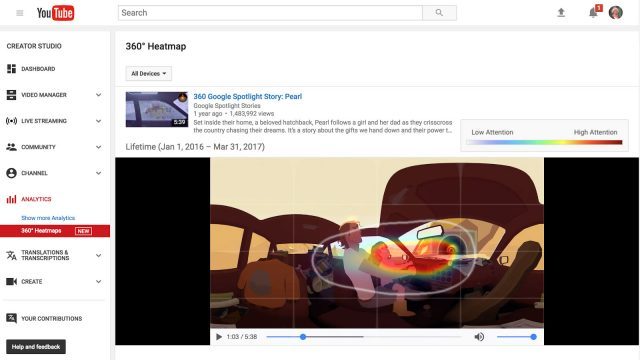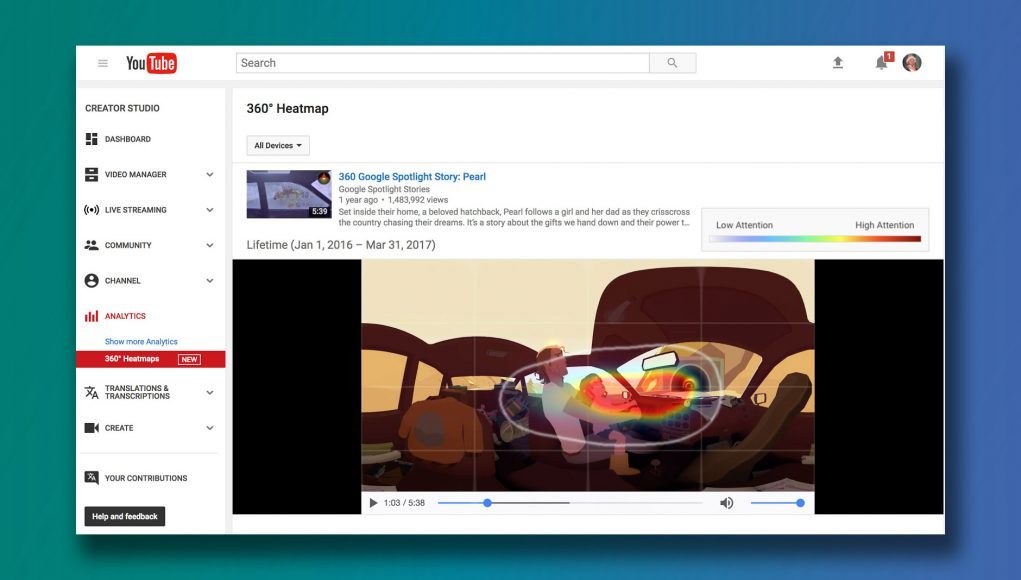Spherical YouTube videos with over 1,000 views now include ‘360° Heatmaps’ within the Analytics section of the Creator Studio. The new feature provides a visual representation of low to high attention areas of the video, helping to inform content creators of what aspects of a 360-degree scene are engaging viewers the most.
YouTube has supported the viewing of spherical videos in VR since 2015, adding features such as stereoscopic 3D, live streaming, and spatial audio along the way. Google’s Daydream VR platform sparked a further push for 360-degree video, encouraging YouTubers to create content with their Jump program, and they’ve also attempted to help creators acclimatise to the unique challenges of recording in this format, offering some tips and best practices.
 Further assistance is found in the Creator Studio, with 360° Heatmaps adding to the wide range of existing analytics tools available to all YouTube content creators. According to YouTube’s Creator Blog, “you’ll be able to see exactly what parts of your video are catching a viewer’s attention and how long they’re looking at a specific part of the video”.
Further assistance is found in the Creator Studio, with 360° Heatmaps adding to the wide range of existing analytics tools available to all YouTube content creators. According to YouTube’s Creator Blog, “you’ll be able to see exactly what parts of your video are catching a viewer’s attention and how long they’re looking at a specific part of the video”.
As the feature applies to any 360-degree video, heatmap data is generated from all views, regardless of what device is being used. This means that some data will come from the orientation tracking in VR headsets, but a significant percentage will represent users without headsets, viewing a 360-degree video on their mobile device, either physically turning around or swiping the screen, or even using a regular browser, panning the view around with a pointer. As people are likely to engage with content in a slightly different way with their head compared to flicking around a screen, the heatmaps can be sorted by device.
The YouTube team has presented some early findings from using this tool, namely that people spend 75% of their time looking forwards, within the front 90 degrees, but many of most popular videos prompted the viewer to look around more, with almost 20% of views being behind them. They also suggest giving viewers “a few seconds before jumping into the action”, probably due to the randomly scattered data over the start of videos as people fumble to get their VR headset on and comfortable, and to familiarize themselves with their new virtual surroundings.







